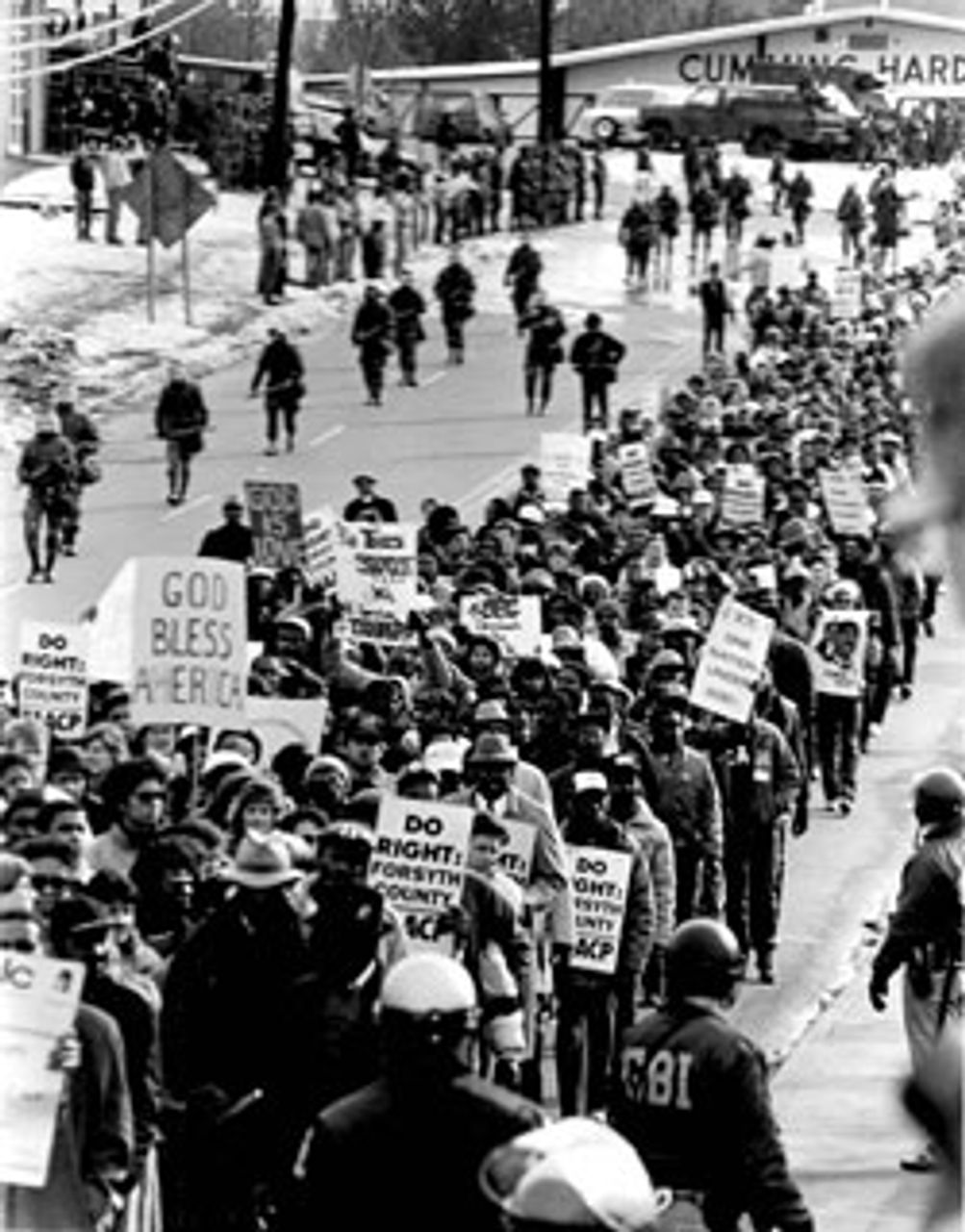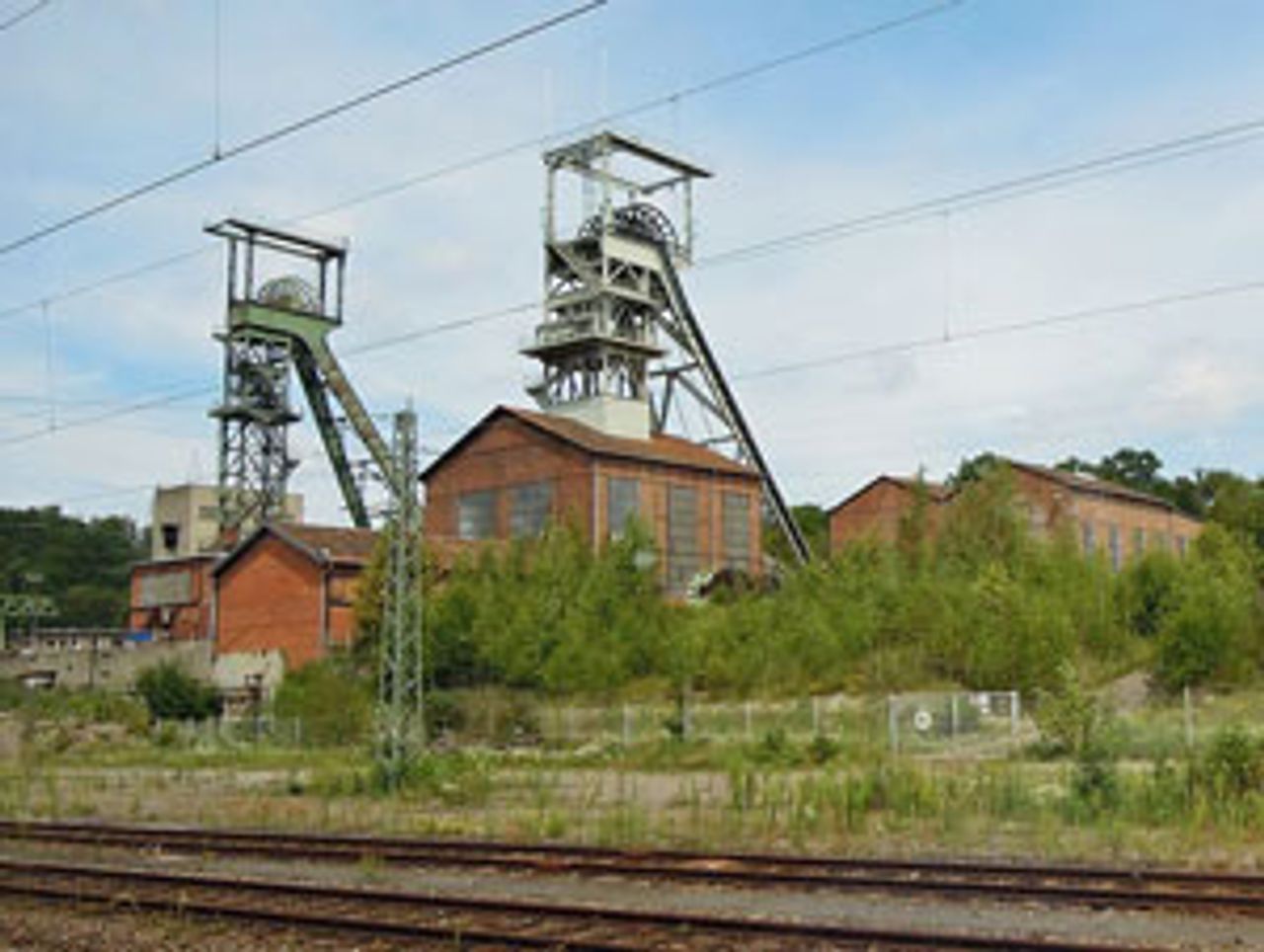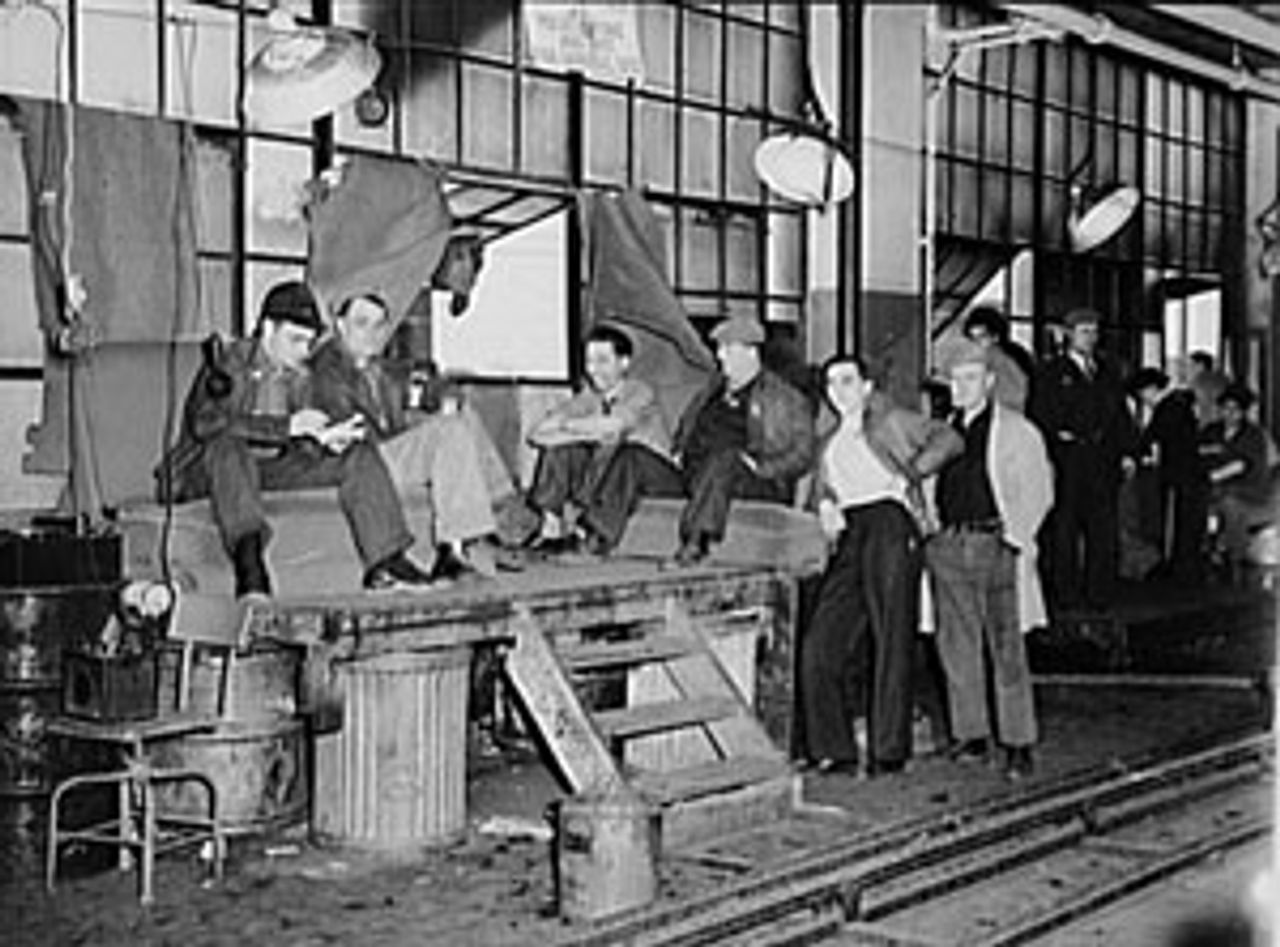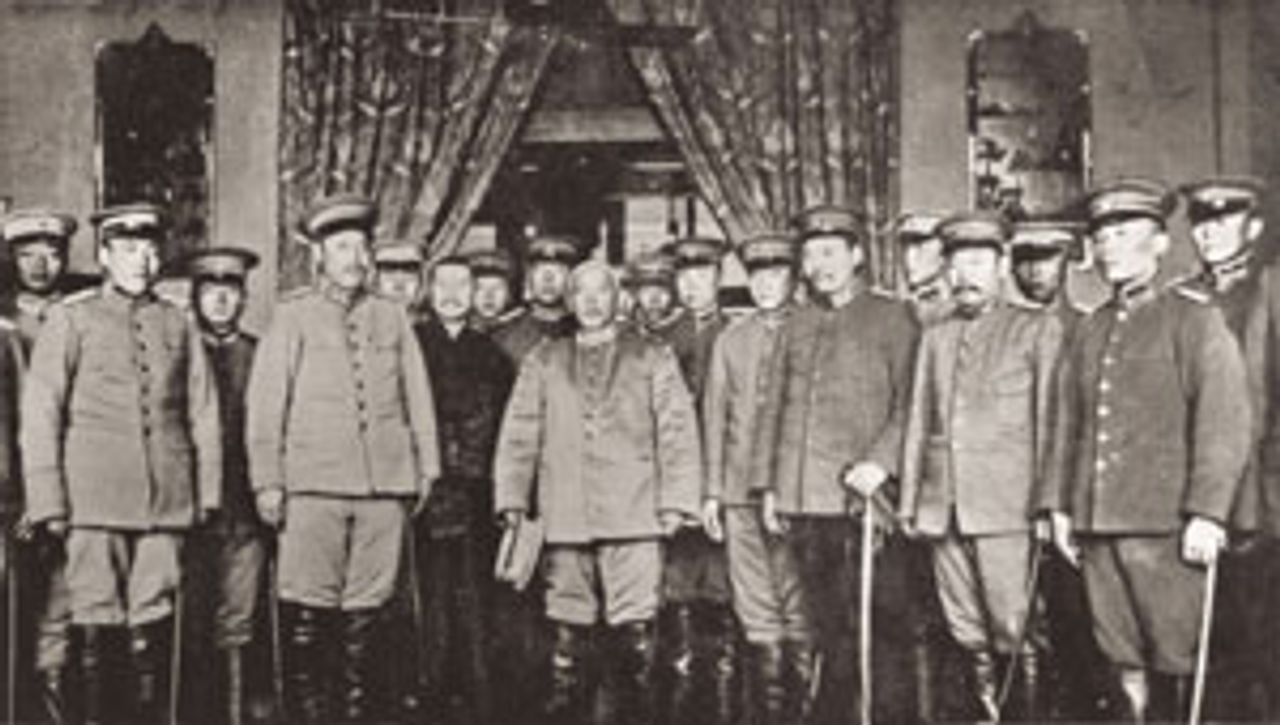This Week in History provides brief synopses of important historical events whose anniversaries fall this week.
25 Years Ago | 50 Years Ago | 75 Years Ago | 100 Years Ago
25 years ago: Anti-KKK protests bring thousands to all-white Georgia county
 The march in Cumming, Georgia
The march in Cumming, Georgia[Photo: pirano Bob R]
Georgia Democratic Governor Joe Frank Harris met with civil rights leaders in Atlanta on February 11, 1987 seeking to end further protests in all-white Forsyth County. Cumming, Georgia was the site of two civil rights marches in January and subsequent protest activities by both civil rights organizations and the white supremacist Ku Klux Klan.
The first civil rights march, on January 17, was aborted as a result of a violent attack by white residents. The following Saturday a second march led by prominent civil rights leaders Hosea Williams, Coretta Scott King (the widow of Martin Luther King) and Dick Gregory attracted 25,000 protesters. The event was called “march against fear and intimidation.”
A large racist counter-demonstration with active KKK involvement was held at the same time. A substantial police presence kept the demonstrators separate. The event received wide media coverage.
Forsyth County had been enforced as an all-white enclave since 1912 by KKK violence and intimidation. A legendary sign posted in the 1940s read “N----r, don’t let the sun set on you in Forsyth County.”
In the days after the demonstrations, black talk show host Oprah Winfrey broadcast a show in a local restaurant, inviting Forsyth County residents to air their views. This led to the arrest of civil rights leader Williams for protesting the exclusion of blacks from the show.
The Atlanta meeting was held one day after the Democratic Party announced that the city would be the site of their 1988 Democratic National Convention. Democratic Party figures, including Governor Harris and Atlanta’s black mayor Andrew Young, were worried that a protracted campaign against the racism of Forsyth County would have a negative effect on the newly announced convention.
50 years ago: Explosion kills 299 German coal miners
 Luisenthal mine head
Luisenthal mine head On February 7, 1962, an explosion at the Luisenthal coal mine in West Germany killed 299 miners. The disaster, caused by a methane explosion, was the deadliest in the history of the Saarland region and the second-worst in German history. Only 134 men survived, many with ghastly injuries.
The methane buildup occurred overnight before the miners arrived for work, after the gas was not properly ventilated from the fourth level, 1,800 feet underground. About 200,000 cubic meters of methane had to be pumped daily from the mine, which had won awards as Germany’s safest. The explosion came with terrible force at 7:55 a.m. Miners died from burns, from the shock wave of the explosion, and from cave-ins up and down the fourth level.
Many of those killed were teenagers. “We were thrown against the wall by a massive wave of air pressure,” said a teenage survivor. “Several of my colleagues seemed to die on the spot.”
The miners’ hometown of Völklingen, a small industrial city near France, was devastated. The miners left behind 222 widows and 354 children.
75 years ago: Flint sit-down strikers win 44-day strike
 Flint sit-downers guarding window at Fisher body plant
Flint sit-downers guarding window at Fisher body plantThe Flint sit-down strike ended on February 11, 1937 after 44 days, with a victory for the striking workers. The announcement that an agreement had been reached between General Motors (GM) and the fledgling United Automobile Workers (UAW) union came at 2:40 a.m. from the suite of a Detroit hotel rented by Governor Frank Murphy.
Even in the days immediately leading up to the settlement, hopes of a final agreement seemed only a distant possibility and massive bloodshed more likely. President Franklin D. Roosevelt was forced to intervene personally on a number of occasions to stop GM representatives walking away from negotiations. In one telephone call, Roosevelt spoke to both John L. Lewis of the Committee of Industrial Organizations (CIO) and GM executive vice president William S. Knudsen. Afterwards Michigan Governor Murphy announced that an end to the strike could still be found without “fatalities.” On February 9 the City Commission of Flint declared a state of emergency in the city and appointed Mayor Bradshaw as commander of police and all other city departments.
Before the strike the GM workforce produced some 53,000 cars per week. During the strike this was reduced to about 1,500. Stocks of GM vehicles were dwindling towards the end of the dispute. Flint was transformed by the class struggle into a war zone with troops, police, goons and the GM police force attempting to terrorize the strikers, their families and their supporters.
The sticking point over which negotiations faltered was the demand by the UAW that the trade union be the sole representative of GM’s employees. A correspondent on behalf of the Times described the issue as “the rock whereon all peace proposals hitherto have split.” During the negotiations Knudsen and GM deliberately utilized a strategy designed to create tension by repeatedly threatening to evict the strikers occupying GM factories. An injunction had previously been issued, but Genesee County’s sheriff declined to enforce the eviction without the assistance of the troops surrounding GM’s facilities.
Ultimately the UAW leadership settled for less than the workers had demanded. The blueprint for the eventual settlement came from an earlier concession to management by the CIO, of which the UAW was a member, to settle the Libby-Owens-Ford glass plant strike. The UAW settled as the recognized collective bargaining agency of its own members only, not all employees. GM sugared the agreement, granting an immediate 5 cents per hour raise to all GM employees from February 15 onwards.
100 years ago: End of the Manchu dynasty
 Yuan Shikai beng sworn in as president on March 10
Yuan Shikai beng sworn in as president on March 10On February 12, 1912, the Empress Dowager signed an agreement on behalf of the six-year-old emperor, formalizing the end of the Manchu dynasty that had ruled China for 288 years. The dynasty, which lacked popular support and was widely viewed as corrupt and subservient to the major powers, had been rocked by a nationwide rebellion that began in October 1911. The rebellion rapidly spread, and the nationalist forces established a republic headed by Sun Yat-Sen as provisional president at the beginning of January.
At the time of the abdication, just three provinces near Beijing supported the Manchus. However, the republicans had not consolidated nationwide political power. Various warlords and sections of the old bureaucracy controlled significant armed forces in different parts of China.
The abdication was a product of negotiations between the provisional republican government based in Nanking and the Manchus. Yuan Shikai, a warlord who had served as imperial prime minister after the rebellion began and had commanded troops against the republican forces, acted as a go-between. A condition of the agreement was that Sun stand down, and Yuan succeed him as president. Sun obliged, but wanted Nanking to serve as the imperial capital. Commanders in Yuan’s personal army orchestrated a coup d’état in Beijing, using it as the pretext to locate the capital there.
The abdication agreement included “Articles of favorable treatment,” under which the emperor retained his private property, his title, and his right to reside in the imperial palace, and received an annual financial subsidy from the republican government.
On February 15, Yuan was declared president, at Sun’s recommendation, by the Nanking government that had previously controlled southern China. On March 10, he was sworn in as national president. His government left in place the old bureaucracy, which was deeply hostile to basic democratic aspirations and the social needs of workers and peasants.
